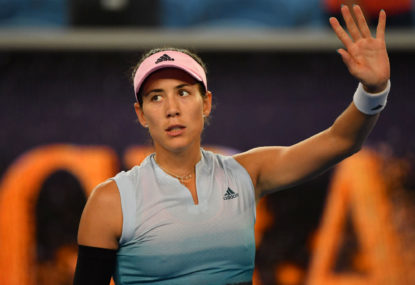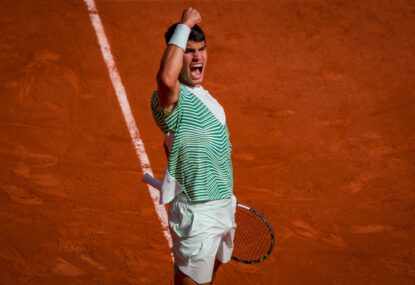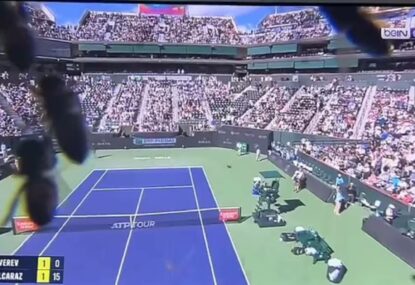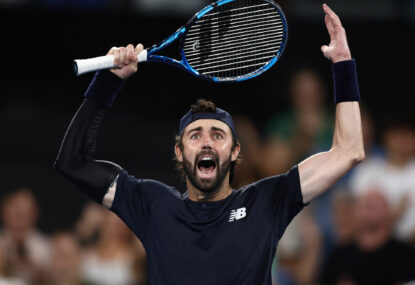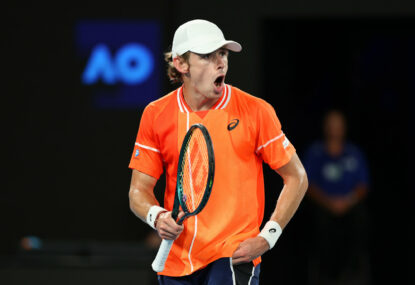When the crowd is chanting ‘Roger’ I hear ‘Novak’.
The third man to arrive in a sport made for two, Novak Djokovic has had the unenviable chore of playing second-fiddle throughout his career to tennis’ most adored match — Roger Federer and Rafael Nadal. His relative obscurity seemed ordained from the beginning; while the precocious 17-year-old Djokovic was making his grand slam debut at the 2005 Australian Open, Rafael Nadal had already cemented himself as a teen juggernaut, defeating the then untouchable Federer in their maiden match, winning his first ATP title, and knocking on the door of the world’s top 50.
Starved of a rivalry since Andre Agassi and Pete Sampras, the tennis world was drooling over the brewing conflict Federer and Nadal offered, and they wasted no time in giving them what they wanted.
By the time Djokovic broke through for his first grand slam at the 2008 Australian Open, Federer and Nadal had played 14 times (including four grand slam finals) snaring the last 11 slams between them. But it wasn’t just the quality of their play that earned them regard, but rather their style.
They so clearly embodied certain qualities we admire, that it was impossible not to find yourself captivated with one (or both) of them after a few glimpses of their brilliance.
In the history of sport, there are few who could claim to have dominated their craft with as much panache as Roger Federer. The backhand is executed with a simple flick or slash — depending on his choice of spin — the violence of it all somehow contained within the wrist and gift-wrapped in an arabesque finish.
The body is lithe above the torso, stripped bare of non-essentials save for a beefy right forearm. His unwavering casual gait between points, garbed in classic cream polo’s, turns baseline’s into makeshift catwalks, and hints to a fitness — fitness in an evolutionary sense— of a creature perfectly adapted for prowling Wimbledon’s forecourt savanna, the laws and technique of the game encoded in his DNA.
Roger in full flight presents the spectator with a beautiful puzzle; how does he take the ball so early, yet never appear late? How does he hit difficult shots — impossible shots — yet appear so at ease? A stock of his shots are half-volley scuffs just off his toes, stubbornly dismissed without a thought of retreating behind the baseline.
Psychologically, his game could be labelled psychopathic; he exhibits high self-confidence and a lack of fear; poor impulse control and demand for immediate gratification — primarily demonstrated with his one-shot-kill forehand; and a lack of empathy and destructive excitement seeking, the latter well-known to all as ‘Federer moments’ — shots that break the physics of the game, jolting your couch-slumped body upright at 2 am, a text to a friend— ‘did you see that!?’ —to check if it was real, if they are awed in the same way you are.
‘Guy is a freak,’ is the friend’s reply. Style, confidence, aggression and poise, no wonder, then, that he has amassed an almost religious following; his game was a revelation.
By 2005 the one-dimensional styles of Federer’s contemporaries — the Lleyton Hewitt’s, Andy Roddick’s, and Marat Safin’s of the tour — had been rendered obsolete; if you didn’t have everything, you had nothing. Only a fool, or a heretic, would pigeon-hole themselves into the retrograde styles of ‘clay-courter’ and ‘power-baseliner’, to do so successfully would require execution approaching the absurd, and that’s exactly what Rafael Nadal did.
Raised on the Balearic island of Mallorca, ‘Rafa’ forged his sacrilegious game on clay under the guidance of his uncle Toni. Non-conformity was a hallmark from the very beginning; a natural right-hander, Toni put the racquet in his nephew’s left, the prevailing wisdom humbly refused, and set course for uncharted thickets that guaranteed nothing but suffering.
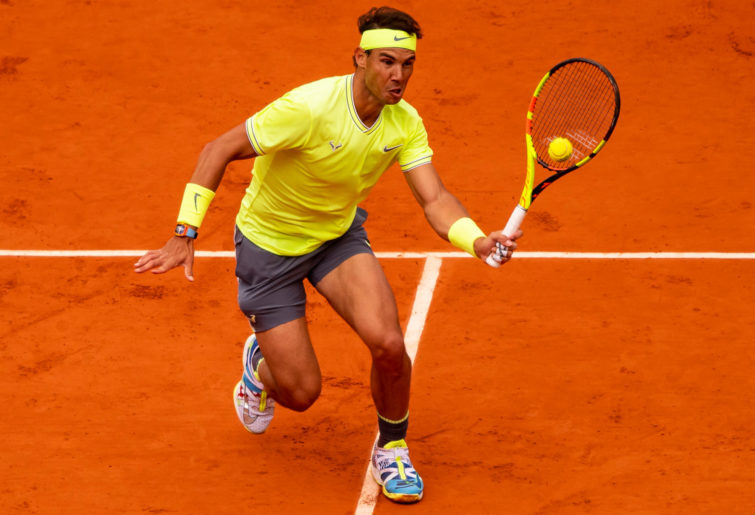
(Photo by TPN/Getty Images)
Ten years later, what emerged was a 16-year-old phenom imbued with a humble manner — perhaps born from humble beginnings as a struggling lefty — and an intensity rarely witnessed in tennis. In a word, his game is brutal. Whereas Federer’s game is impossible to mimic due to its sheer sophistication, Nadal’s is equally safeguarded due to its sheer physicality; you can’t use what you can’t lift.
The Nadal forehand is the heaviest in the game, able to keep opponents in a backhand holding pattern until—much like a plane—they run out of fuel, trying to thread shots they don’t own in moments they can’t afford to lose. Few have managed to tame it.
Upon anticipating a forehand, Nadal’s hands and torso rotate in concert to load kinetic energy, and once in position, he drops his wrist below the ball, relaxing it for a split-second, his legs pressing into the ground, unloading his coiled frame, the wrist now snapping up a steep trajectory, hair-whipped face pinched as the racquet lags behind the hand at a phenomenal speed, the strings biting into the ball, pocketing it to an egg, before it is flung back high over the net, his arm swinging up and over his head, finishing with that trademark flexed bicep having nearly decapitated himself, the top spin pulling it down now—forcing it down—into the court, as if Nadal was on top of it the whole journey, smothering it into the ground, the felt shredding like a drag car’s tire having travelled there nearing 5000 RPMs, sending a rooster’s tail of clay out the back as it leaps off the court.
By the time the ball reaches the opponent’s racquet, it feels like an atlas stone. That is Nadal. Well, that’s a taste of Nadal. The full show starts well before a point is played, when he comes bouncing out of the tunnel dripping like a prizefighter, taped fingers and cut sleeves to match. Each point is played with sacred importance — the butt-pick, a sweep of hair over his left ear, a sweep over his right, down his beaded nose, a bite of the bottom lip, a furrowed brow.
Then it’s game, and the water bottles are aligned to please the gods of whatever baseline he’s playing from, the lines swept obsessively, the rituals undertaken with exhaustive meticulousness to the point where you really think he’s playing for his life, as if a loss will result in his blood sacrifice right there on the court.
And while there is no shortage of gladiatorial theatrics, perhaps his greatest appeal lies in his ability to provide a plot-twist during a point he simply has no business winning. A textbook example that comes to mind was against Federer in the fourth set of their epic 2008 Wimbledon final. It was 7-7 in the tiebreaker, so it’s match-point Nadal or set-point Federer from here.
Federer hits an inside-in forehand back behind Nadal into his backhand, which Nadal replies a fraction short, and Federer jumps on it (like he always does) and rips it for a winner down the line, only that at the bottom of the screen the torso of Nadal can be seen racing to his left, and in the blink of an eye he has somehow intercepted Federer’s shot right before it’s about to crash into a line judge (about six metres behind the baseline), and with nothing more than that damn wrist he snaps the ball with ungodly speed and strength through a six-inch pipe down the line, past Federer’s swiping racquet, for a winner.
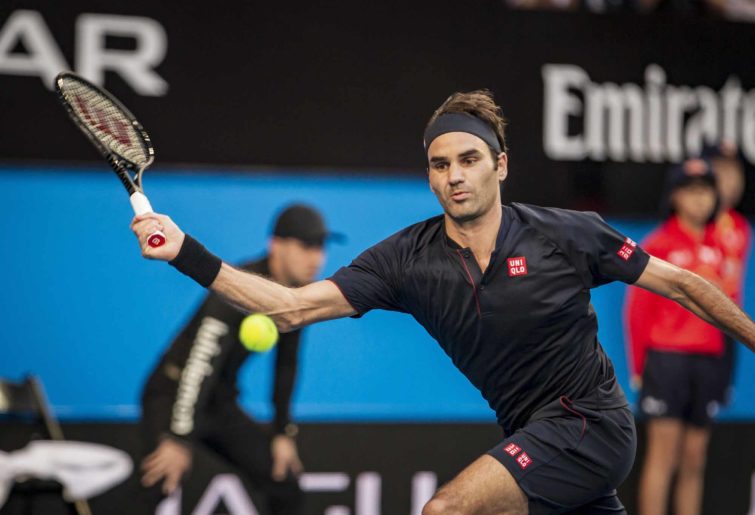
(AAP Image/Tony McDonough)
Spectators shoot up obscuring the television feed, but you can see Rafa’s knees buckle as he celebrates, dual-wielding flexed biceps in ecstasy. In his early days of pirate pants and sleeveless tees, points like this must have felt like pure robbery, over and over again; despite placing it a safe distance — or whatever you thought was a safe distance — he got you. Humble, intense, raw, iconoclastic. If you didn’t like Federer, try Nadal.
And then there is Djokovic. Tall and slinky with rubber joints, many are already calling him the greatest ever — or at the very least, conceding that his game is the best in the open era — but Federer and Nadal are still playing, and no matter how many matches Novak wins, he just can’t seem to win the crowd. Why?
When you watch Novak play, it’s hard to appreciate how good he is. He doesn’t hit the flicked and slashing winners of Roger, and he doesn’t produce those plot-twist, full-stretch screamers like Rafa — though he’s not far behind. He seems to win points in what I can best describe as ‘systematic’.
He’s been likened to a cyborg pong-master, able to get everything back with interest donning that pixel-perfect jet-black hair. In a nutshell, Novak’s game is built on applying pressure.
Through depth and changes in direction, he constricts and suffocates opponents until they crack. Depth of shot is hard to appreciate as a viewer, but more importantly, it’s hard to handle as a player. The same can be said for a change of direction; jerking the opponent from side to side is not as sexy as whipping a line-kissed winner or ripping a full-stretch passing shot from the alley, but over time it’s just as effective.
If you had a Venn diagram of Roger and Rafa, Novak would occupy that inner slit where both games overlap. It makes sense, considering he forged his game in the crucible of Federer and Nadal’s peaks, plucking facets from both until he emerged in 2011, fully formed and unstoppable.
His forehand and backhand are equally strong, which allows him to play from the exact centre of the court, unlike Roger and Rafa, who tend to occupy a mound inside their backhand corners, daring opponents to hit into their forehands. He’s faster than Roger but slower than Rafa — by slim margins in both cases — and plays closer to the baseline than Rafa, but not as close as Roger. His serve is better than Rafa’s but not as good as Roger’s.
His one forte is the return-of-serve; unmatched by anyone in the history of the game, he has a clairvoyant ability to read a serve and put it back in.

(Photo by Jack Thomas/Getty Images)
But again, he’s not blazing winners off serves, he’s getting them back deep down the middle; pressure, remember? So, while Roger finishes points with flair and venom in equal parts, and Rafa whips and scampers impossible passing shots, Novak seems devoid of a trademark; much of what he does so well happens during the point, in a subtle fashion.
Which brings us to the paradox of Novak and his crowd woes; how can one appreciate something you can’t see? We watch sport to witness things that occur in the margins; the winner that catches the outside edge of the line, the basket made on the buzzer, a race won by a hair, a try in the corner.
Seeing the human body and mind exerted to the limits while the game is in the balance are both exhilarating and inspiring, exponentially so when it is done with the authentic stamp of our beloved hero’s.
We love Federer because the way he plays, the way his body moves, is a celebration of what man’s physical nature is capable of even under duress. We love Nadal because the way he plays is a celebration of what man is capable of in spite of his nature; we are so damned adaptable; anything is possible if you have his drive.
Perhaps Novak will be appreciated more in posterity. Much like his game, adoration might trickle in as curious fans leaf through his records and statistics, the sheer weight of numbers weighing on their conscious, the mental gymnastics required to continually shun him just too great.
Balanced, calculated, efficient, inevitable. The love for Novak will arrive sooner or later.
For now, he’ll keep pretending it’s already here.
































































































